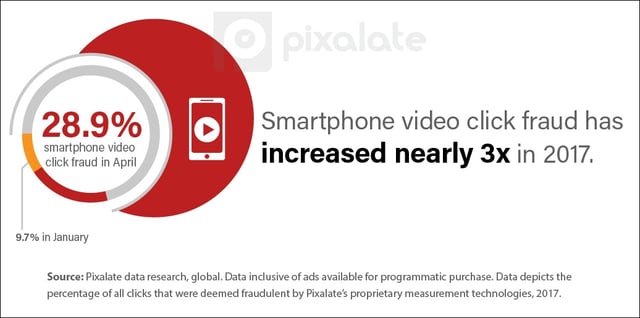
Pixalate has released the June 2017 Programmatic Click Fraud Benchmarks Report. The report offers digital marketers the first look at click fraud rates in the programmatic media marketplace.


Inside the report you'll find:
Digital marketers have been attempting to ditch "click-based" metrics for years, but the KPI still shows up on campaign reports. And while the ad world debates the merits of click-based metrics, the impact click fraud has within programmatic is often overlooked.
The research, data, and insights contained in this report can help buyers and sellers understand and benchmark click fraud in programmatic — with granular data that drills down into specific channels and devices.
Download the report today to learn more about click fraud in programmatic!
*By entering your email address and clicking Subscribe, you are agreeing to our Terms of Use and Privacy Policy.
These Stories on Company News
*By entering your email address and clicking Subscribe, you are agreeing to our Terms of Use and Privacy Policy.

Disclaimer: The content of this page reflects Pixalate’s opinions with respect to the factors that Pixalate believes can be useful to the digital media industry. Any proprietary data shared is grounded in Pixalate’s proprietary technology and analytics, which Pixalate is continuously evaluating and updating. Any references to outside sources should not be construed as endorsements. Pixalate’s opinions are just that - opinion, not facts or guarantees.
Per the MRC, “'Fraud' is not intended to represent fraud as defined in various laws, statutes and ordinances or as conventionally used in U.S. Court or other legal proceedings, but rather a custom definition strictly for advertising measurement purposes. Also per the MRC, “‘Invalid Traffic’ is defined generally as traffic that does not meet certain ad serving quality or completeness criteria, or otherwise does not represent legitimate ad traffic that should be included in measurement counts. Among the reasons why ad traffic may be deemed invalid is it is a result of non-human traffic (spiders, bots, etc.), or activity designed to produce fraudulent traffic.”

